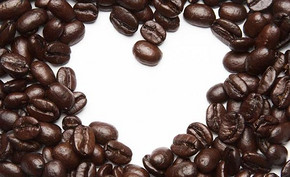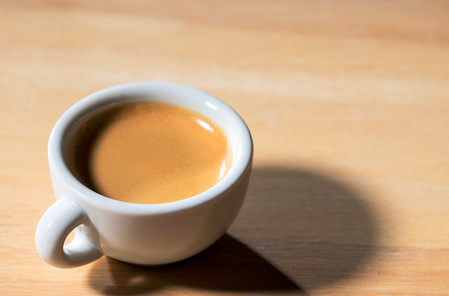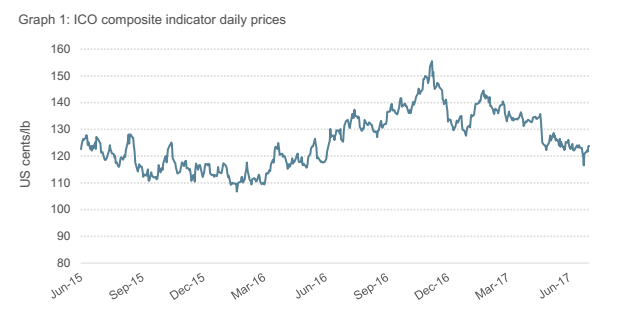The difference between Arabica and Robusta coffee species
Follow the caf é (Wechat official account vdailycom) and found that Beautiful Cafe opened a small shop of its own.
Coffee trees are mainly divided into categories. The leaves of Coffee Arabica and Coffee Robusta are about 15 centimeters long. Robasda's leaves are long, soft-oval or pointed, and bright green in color. Liberian species are rarely circulated in the market because of their poor flavor and resistance to leaf rust.
Arabica
Pollination method: self-pollination
Root system: deeper
Temperature requirement: 18 ~ 22 °C
Rainfall requirements: 1400~2200mm
Altitude requirements: 800m to 2500m
Caffeine content: 0.8%-1.4%
The planting area is extensive, accounting for about 70%
The bitter taste is low, the aroma is pleasant, delicate and soft.
Disease resistance: weak
Small granule bean seed, the shape is flat and oval, the smell is fragrant, fragrant and delicate, the sour taste is pleasant, the texture is smooth, less bitter taste.
Arabica coffee beans account for about 70% of the world's production, and it has excellent aroma and flavor, making it the only coffee variety of native species that can be drunk directly. However, Arabica species have higher requirements for environment and planting, and are not resistant to drought, frost, diseases and insect pests.
Coffee trees grown in Arabica are suitable for colder tropical high-altitude areas. Especially like to grow on steep hillsides, especially the terrain with large temperature difference between day and night, suitable sunshine and shade, and prone to morning fog can grow high-quality Arabica beans.
Arabica coffee beans are grown on steep slopes, are not easy to be harvested mechanically, are mainly picked manually, and the transportation is inconvenient, so the price of Arabica beans is significantly higher than that of Robusta beans.

Robusta
Pollination method: cross-pollination
Root system: shallow
Temperature requirement: 22 ~ 28 °C
Rainfall requirements: 2000~2500mm
Altitude requirement: 0mm 700m
Caffeine content: 1.7% to 4.0%
Planting in a few countries and regions, accounting for 25%
High bitterness, good consistency and vulgar flavor
Disease resistance: strong
The Robusta species is a leaf rust resistant variety found in the African Congo. It grows in hot and humid areas and is widely cultivated in lowlands and plains below 1000 meters above sea level. Robusta beans have a unique "fragrance" and bitter taste. A cup of coffee made of Arabica and Robusta beans, as long as the proportion of robusta beans is more than 3%, then the whole cup of coffee will be robusta flavor. Its style is so bright and strong that almost no one drinks 100% robusta coffee.
Robusta beans are mainly used for the formulation of beans when used directly, and Luodou is more used for instant coffee, bottled coffee beverages, raw materials for food industry and so on. The caffeine content of robusta beans is about 2-3 times that of Arabica. Robusta beans are mainly planted in lowlands and plains below 1000 meters above sea level, with fast growth, strong resistance to diseases, pests and disasters, and can be planted on more barren land, so their aroma and taste are much lower than those of Arabica species. The main producers of Robbosa beans are Indonesia, Vietnam, Brazil and other countries.
The flavor of Robusta beans is mediocre and pungent, the sour taste is not obvious, and the bitter taste is heavy. Unbaked Luodou smells like raw peanuts, the taste after baking is close to the taste of wheat tea, and deep baking shows the smell of rubber (also known as the smell of burning tires), so flavors are usually added to instant or bottled coffee drinks.
I don't know the difference between Arabica and Robusta coffee trees introduced by the editor above. Do you remember them all?
Important Notice :
前街咖啡 FrontStreet Coffee has moved to new addredd:
FrontStreet Coffee Address: 315,Donghua East Road,GuangZhou
Tel:020 38364473
- Prev

The feelings of the Italian Robusta
Following Cafe (official Wechat account vdailycom) found that Beautiful Cafe opened its own shop in a small town in southern Italy, with a strong coffee flavor and a charming coastline. Cater to the leisurely way of life, unwittingly slow down the pace. Over time, you will find that people here seem to have a preference for robutus coffee. With Arabica.
- Next

The price of Arabica is under temporary pressure. Robsta continues to rise.
Kaiping (official Wechat account vdailycom) found that the coffee market was in turmoil, with Arabica prices plummeting and Robusta closing higher as Arabica prices tumbled. Exports remained strong in June, reaching 10.9 million bags, up 8.8 per cent from last year, leading producing countries to hoard large inventories. So in July, the coffee market is in full supply.
Related
- Detailed explanation of Jadeite planting Land in Panamanian Jadeite Manor introduction to the grading system of Jadeite competitive bidding, Red bid, Green bid and Rose Summer
- Story of Coffee planting in Brenka region of Costa Rica Stonehenge Manor anaerobic heavy honey treatment of flavor mouth
- What's on the barrel of Blue Mountain Coffee beans?
- Can American coffee also pull flowers? How to use hot American style to pull out a good-looking pattern?
- Can you make a cold extract with coffee beans? What is the right proportion for cold-extracted coffee formula?
- Indonesian PWN Gold Mandrine Coffee Origin Features Flavor How to Chong? Mandolin coffee is American.
- A brief introduction to the flavor characteristics of Brazilian yellow bourbon coffee beans
- What is the effect of different water quality on the flavor of cold-extracted coffee? What kind of water is best for brewing coffee?
- Why do you think of Rose Summer whenever you mention Panamanian coffee?
- Introduction to the characteristics of authentic blue mountain coffee bean producing areas? What is the CIB Coffee Authority in Jamaica?

